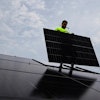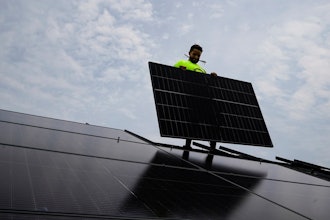The growing global emphasis on renewable energy placed a premium on the ability to store electricity from intermittent sources for long periods of time.
Tesla Inc. made the most prominent effort to tackle that challenge in 2015 by bolstering its lithium-ion vehicle batteries for homes, business and utilities.
But other companies are talking a new look at older technologies in hopes that they could provide long-term power more economically than chemical batteries. The Wall Street Journal profiled three such businesses this week.
California-based Eagle Crest Energy plans to convert a former iron mine east of Palm Springs into a pumped hydropower facility.
The $2 billion project would install pumps that send large amounts of water into reservoirs during times of abundant, cheap power — namely, during daylight for solar farms in the nearby desert.
At night, the water would be released down the mineshaft and generate hydropower with the help of gravity alone. The Palm Springs-area project would generate enough electricity to power nearly a million homes for up to 10 hours.
Another California company, Amber Kinetics, developed an advanced version of a flywheel that, after it is powered up by renewable energy, can continue spinning at high speeds — and generating power — for hours at a time.
Finally, the Journal detailed plans by Canadian company Hydrostor to develop an energy storage system based on compressed air that would be pumped into a large, underground tank filled with water.
Each system, proponents hope, could eventually accommodate rising energy demands even when the sun isn't shining or the wind isn't blowing.






















